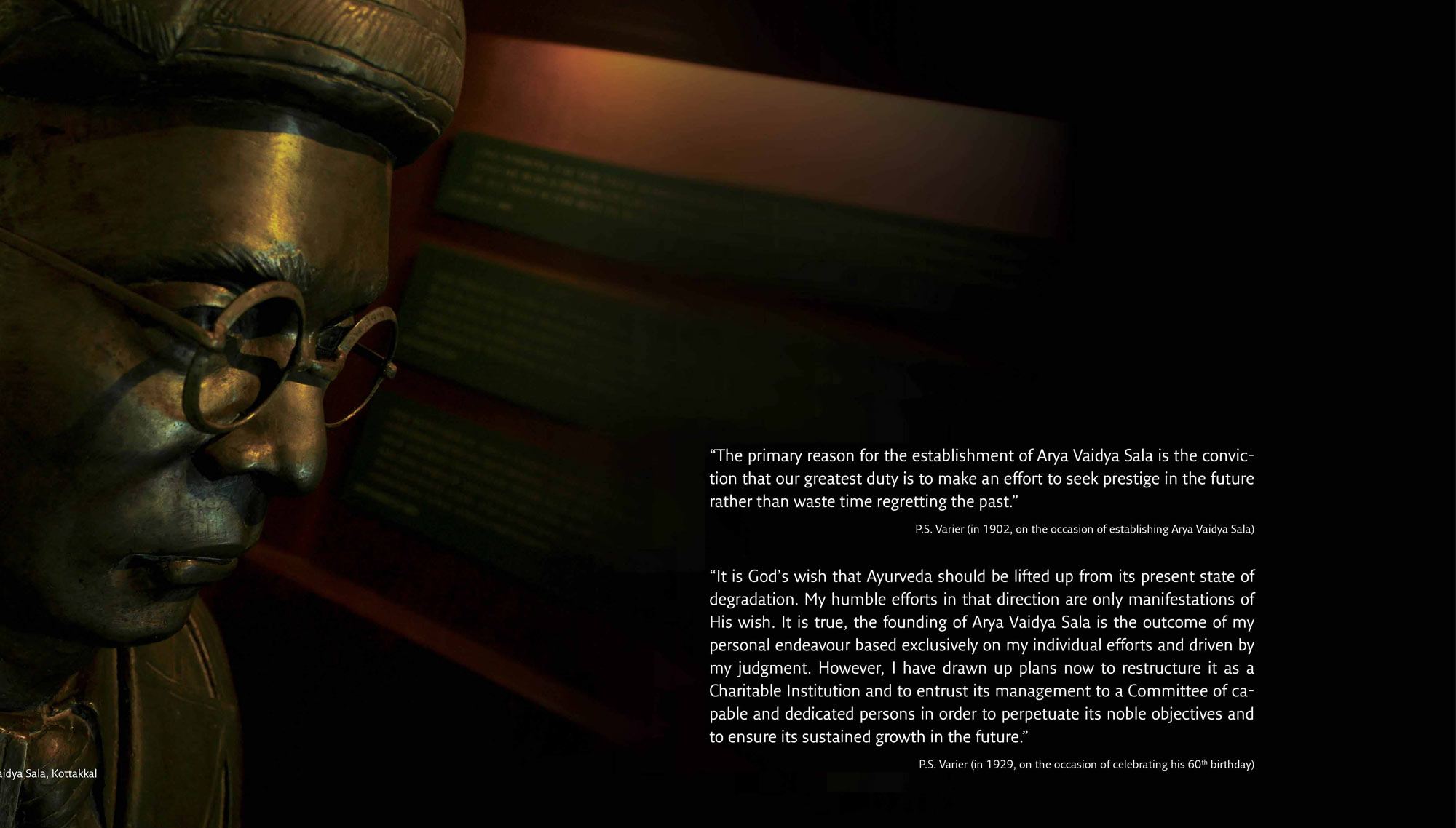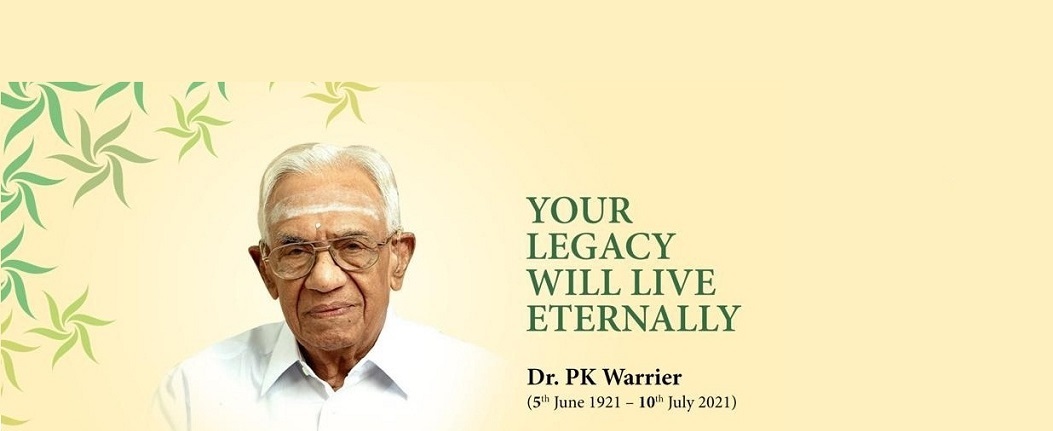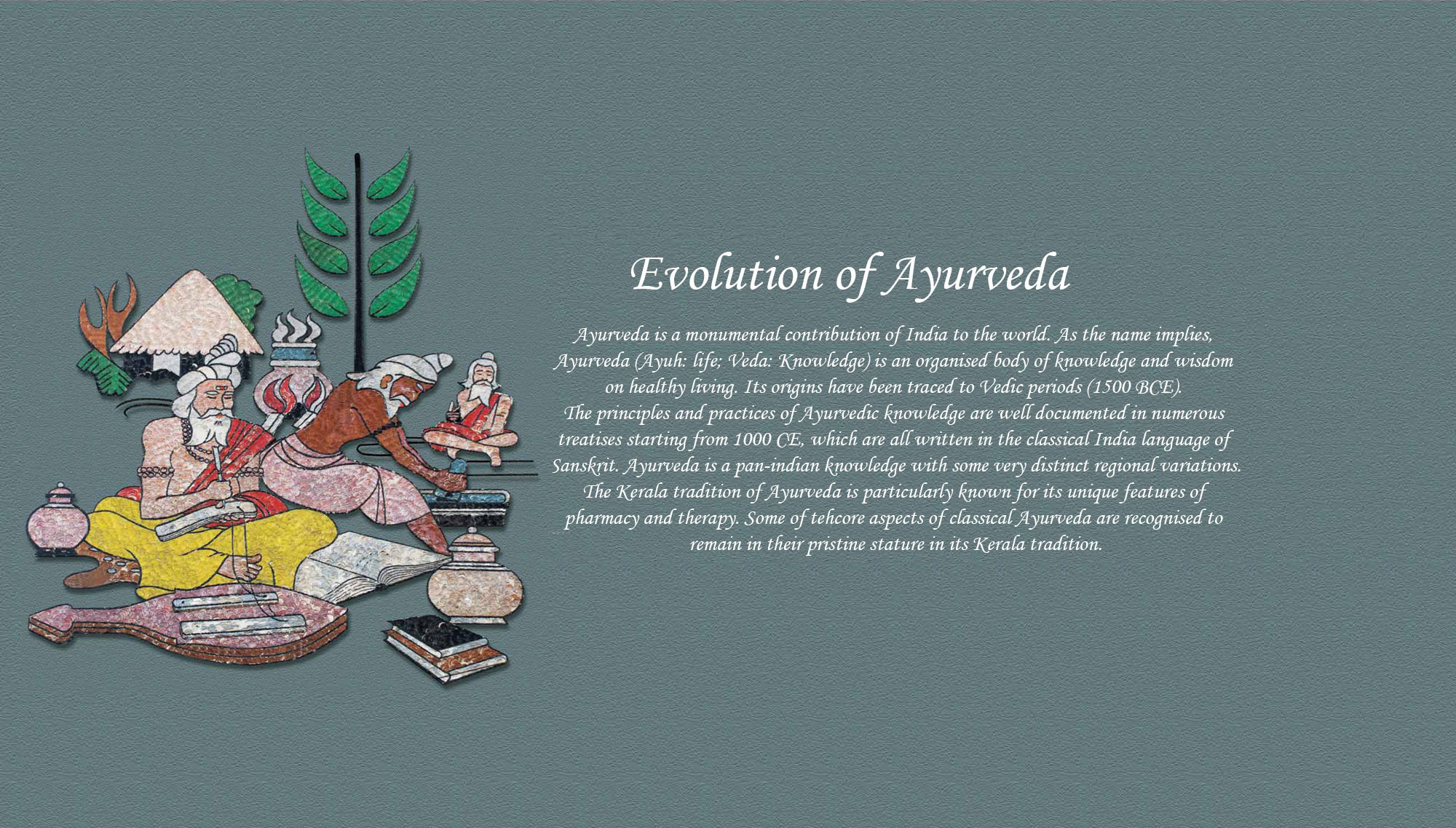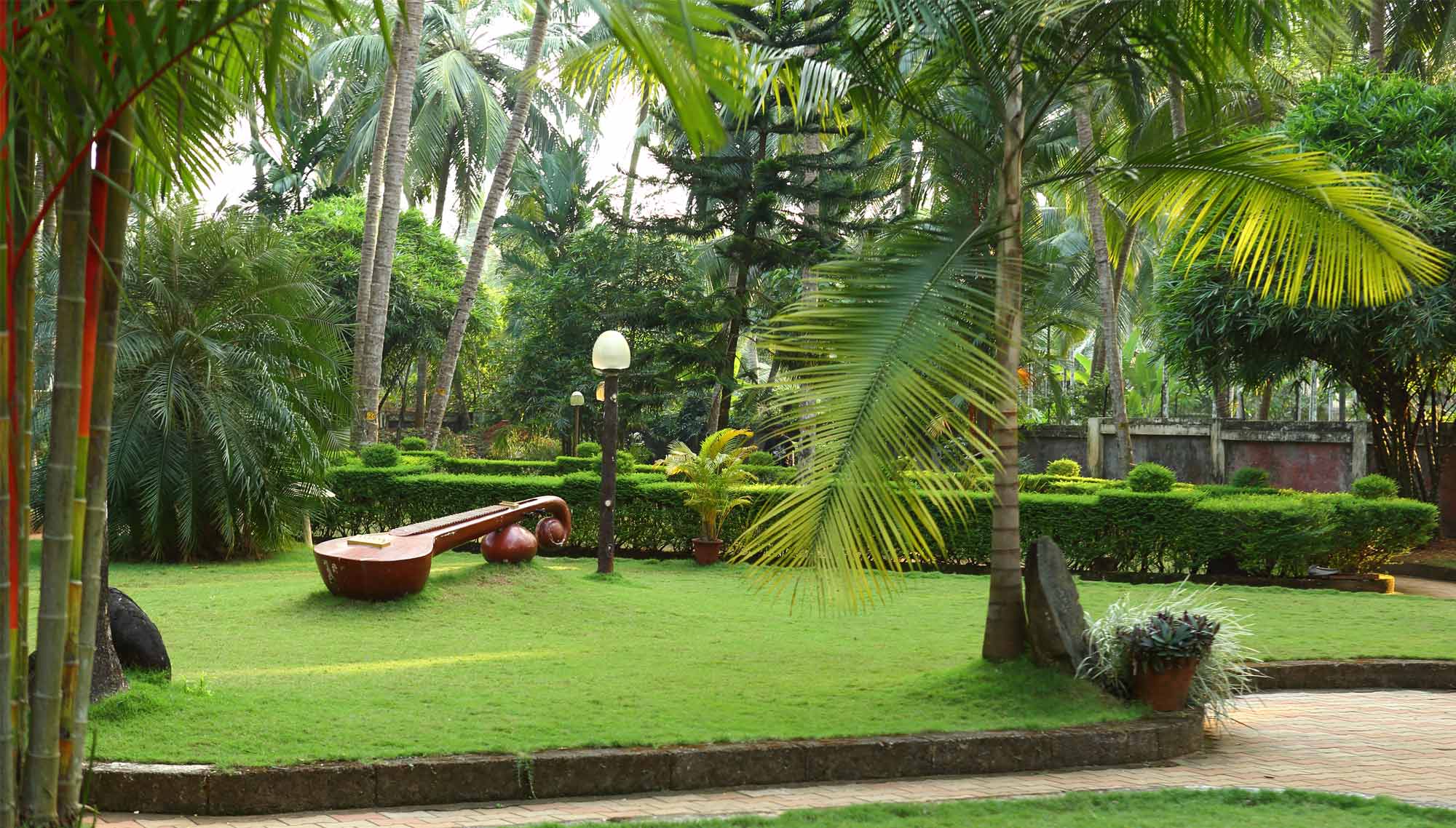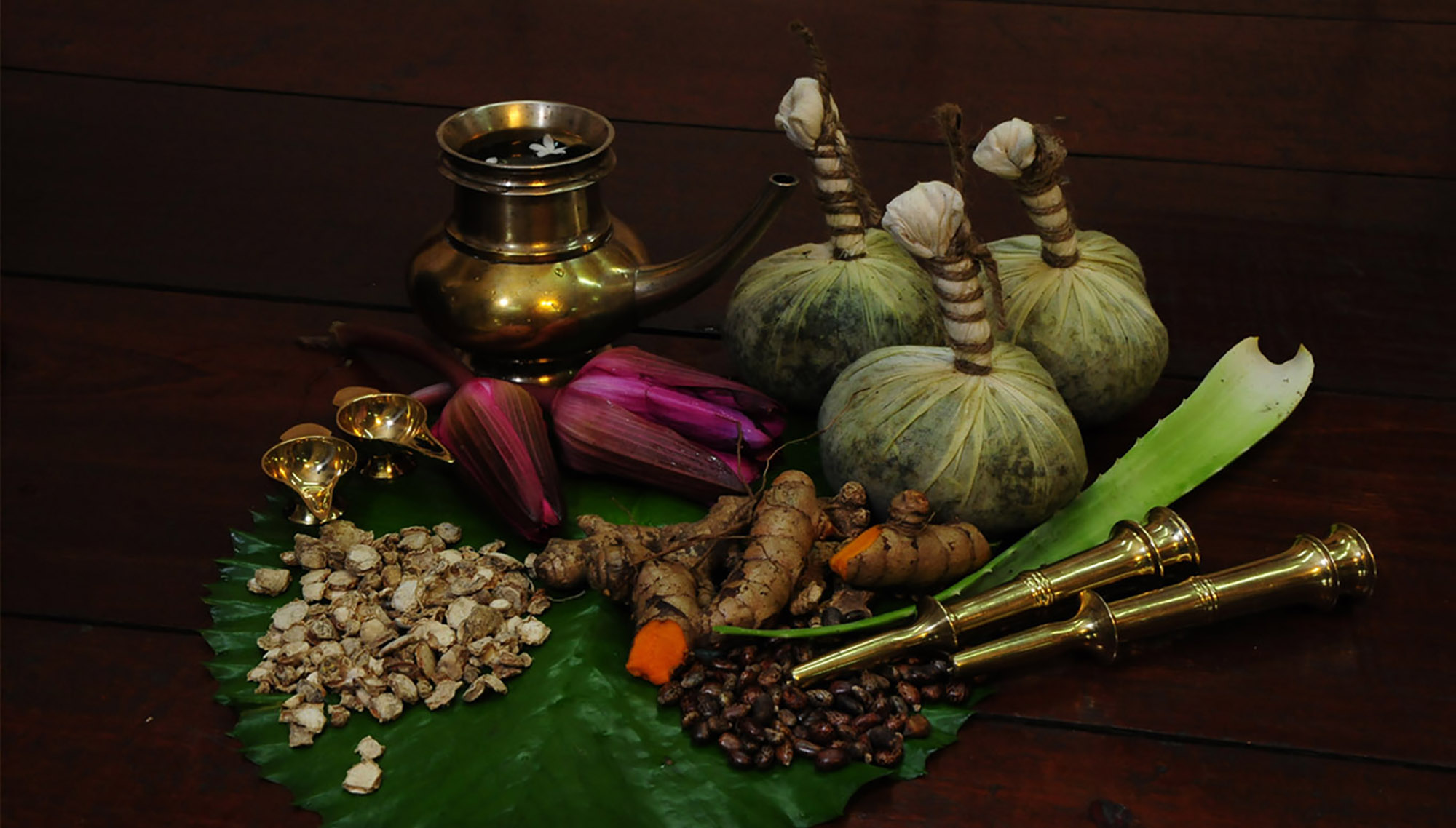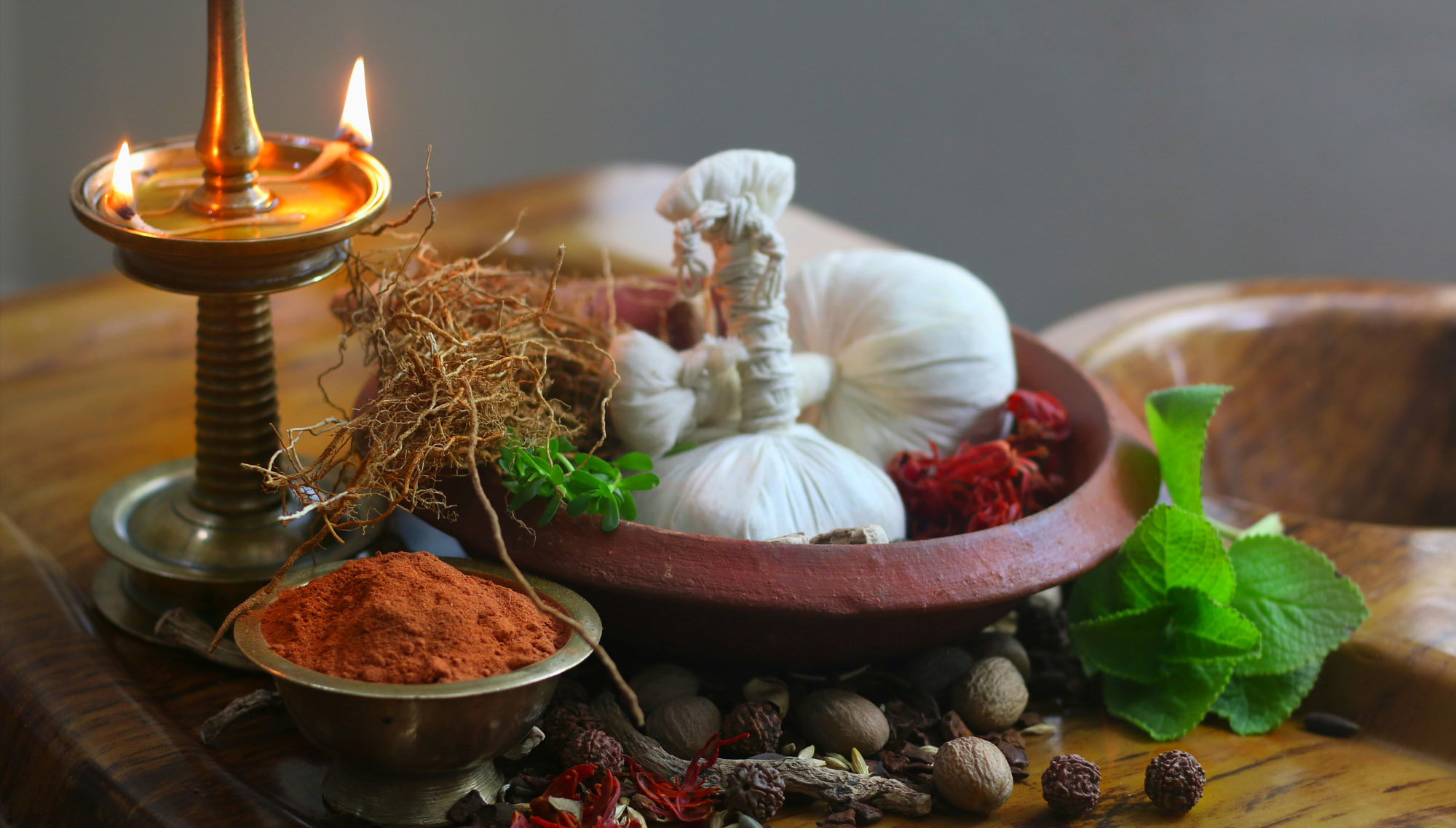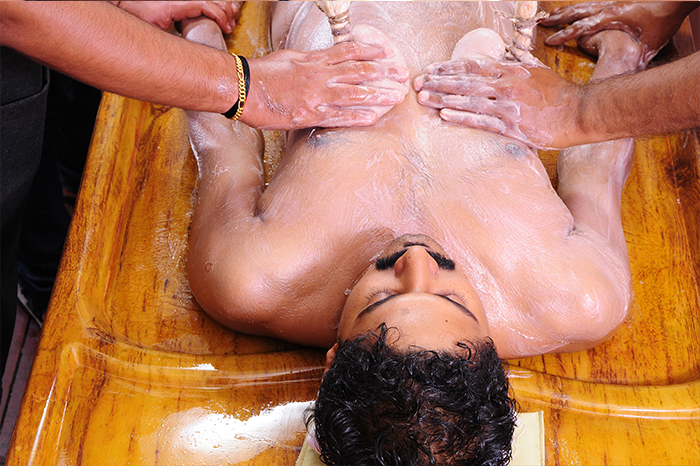About us
Arya Vaidya Sala,Kottakkal, (AVS) is an 120 years old Charitable Institution engaged in the practice and propagation of Ayurveda, the ancient health care science of India. AVS offers classical Ayurvedic medicines and authentic Ayurvedic treatments and therapies to patients from all over India and abroad.
AVS was established at Kottakkal in Kerala State of India in 1902 by the visionary physician and philanthropist, the late Vaidyaratnam P.S. Varier. Started essentially as a village clinic, it has now grown into a multi-unit, multi-disciplinary, multi-functional and multi-crore organisation. It has operations in different areas of Ayurvedic practice. AVS runs Ayurvedic Hospitals at Kottakkal, Delhi, and Kochi. All classical Ayurvedic medicines, therapies and expert medical advice are available there. AVS has three modern medicine manufacturing units attached with well equipped quality control labs. These factories produce more than 550 classical and new generation formulations which are made available to patients through 26 Branch clinics and 1650 authorised Dealers spread across the country. AVS is also engaged in research activities, publishes Ayurvedic periodicals and books, cultivates medicinal plants and conducts educational programmes. AVS also runs a Kathakali Academy where the classical theatre of Kathakali is taught and performed.
AVS was founded in 1902 by the late Vaidyaratnam P.S. Varier at Kottakkal in Malappuram district of Kerala State. The nearest Railway station is TIRUR (Malappuram Dist), on the Chennai-Mangalore railway line, at a distance of 16 km. Kozhikode is the nearest airport at a distance of 28 km. Kottakkal is situated at a distance of about 165 km from Kochi, 160 km from Coimbatore and 48 km from Calicut (Kozhikode) by road.
AVS is a Charitable Trust of public nature having three drug manufacturing units, at Kottakkal, at Kanjikode, and at Nanjangud where more than 550 genuine ayurvedic medicines are manufactured.
The Ayurvedic Hospital & Research Centre at Kottakkal has 204 rooms with necessary amenities. Other similar Hospitals are located at Kochi, Delhi and Aluva. Classic Panchakarma and other Kerala special treatments are made available in these hospitals administered under the supervision of expert Ayurvedic Physicians. These treatments are found effective for various kinds of debilitating ailments.
Vaidyaratnam P. S. Varier's
Arya Vaidya Sala, Head office
Kottakkal (P.O.),
Malappuram (Dist.),
Kerala – 676 503,
INDIA.
Tel: +91 0483 280 8000
Fax : 91 483 2742572
E-mail : mail@aryavaidyasala.com
Hospitals
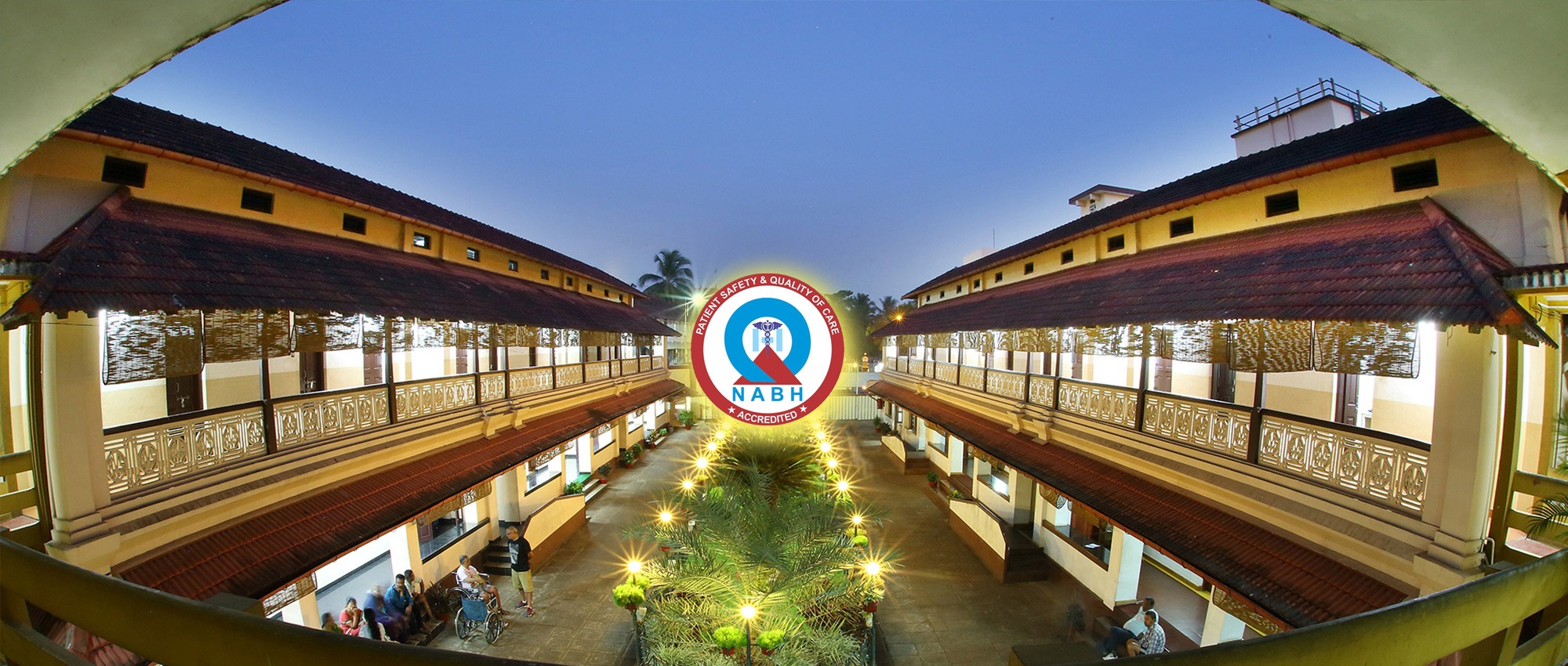
Established in 1954, this Hospital complex is, perhaps, the first of its kind where all the classical Panchakarma and Kerala special therapies were made available to patients in an organised manner under the umbrella of a modern Hospital facility.

The Ayurvedic Hospital started at Kottakkal in 1954 steadily grew in its capacity to accommodate patients and in the amenities provided to patients and bystanders. And yet, when it celebrated its 50th anniversary in 2005, it had already become clear to the Management that the Hospital accommodation is so heavily booked that the suffering patients are made to wait long periods of time before an accommodation became available.
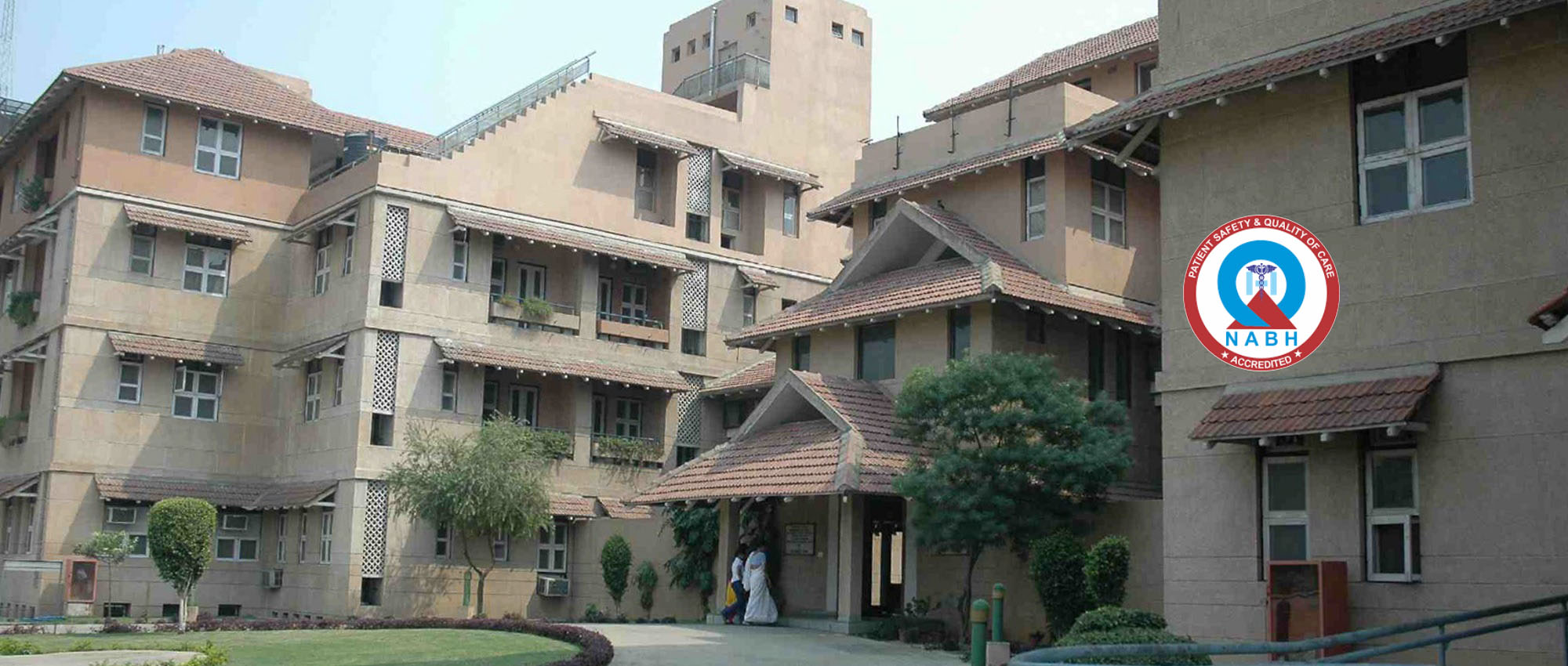
In order to fulfil the longstanding demand of patients from the Northern parts of India and abroad this 49-bed full-fledged hospital was started in Delhi in the year 2000. The diagnostic and therapeutic procedures, as well as the authentic medicaments used, are exactly the same as being employed at the Ayurvedic Hospital at Kottakkal.
Ayurveda
The conceptual and operational framework of Ayurveda is wide enough to include all that is essential to make a man healthy and happy. It includes the study of right conduct (dharma), which is necessary for the healthy growth of society in which the man lives. Further it deals with the philosophical aspect of life, the knowledge of which contributes greatly to the comfort and happiness of all human beings. Ayurveda philosophically understands the limitation of human efforts. Still it talks about the means of prolonging life and the methods of invigorating it.
The objectives of Ayurveda are mainly two, the first being the maintenance of positive health, and the other treatment of diseases. These clearly defined objectives are achieved through logically developed means in a classical way. On the basis of objectives defined, the sum and substance of Ayurveda can be classified into two parts -
- Healthy man’s regimen - the science of positive health (svasthavrittam)
- Patient’s regimen (aturavrittam).
Ayurveda In Kerala
The ideal geographic location of Kerala and its salubrious climate has made external purification and rejuvenation therapies most effective for treatment of many psychosomatic disorders
The high humidity in Kerala helps to open up the body pores and the medicinal oils used in massaging get easily absorbed into the body there by increasing the effectiveness of the treatment
Sirodhara, Pizhichil, Navarakizhi, Thalapothichil, Pachakizhi and Podikizhi are some of the Kerala special ayurvedic procedures
The fundamentals of Ayurveda being practised and taught in Kerala are not different from those of the rest of the country, in their essence and philosophy. But in the present days, there indeed is a notable difference in certain aspects of Kerala tradition of Ayurveda. This difference pertains to the importance given to Vagbhata's Ashtangahridayam in preference to other classical texts by Kerala traditional physicians, the uninterrupted history of practising the classical panchakarma therapies in all their authentic fidelity, the innovative development of the reputed Kerala preparatory therapies and finally the wide variety of exclusive herbal based formulations overshadowing the use of metal and mineral based drugs.
History of Ayurveda
Ayurveda is a monumental contribution of India to the world. As the name implies, Ayurveda (ayuh: life, veda: knowledge) is an organized body of knowledge of healthy living. Systematized knowledge is science, and it is an expression of human creativity. Since creativity has diverse expressions science is a multifaceted enterprise, which refers to different ways of knowing. So the term science need not be confined to the sense of the term used in modern western culture, where it is an institutionalized practice conditioned by a set of conventional rules.
This realization about the vast conceptual framework of science is mandatory for the appraisal of Ayurveda, which represents a well-codified human care system and speaks of the art and science of health and healing.
From where and when the stream of Ayurveda started flowing still remains unanswered. However, it has an uninterrupted history of more than 3000 years. The historians and scholars have their own arguments and reasons in fixing up different time frames. Anyway, one thing can be said for certain that there is no civilization in the world, which has not developed some system of medicine or the other. It was the periodic systematization of such medical knowledge and practice, which led to the development of medical science. The same is the story of Ayurveda with its own variations.
It could be seen that Ayurveda is rooted in the knowledge revealed by ancient seers whose insights and visions are compiled in the vedas. Vedas are the earliest forms of documented knowledge. The six systems of Indian philosophy - nyaya, vaiseshika, sankhya, yoga, mimamsa and vendanta acknowledged the authority of vedas. Of the four vedas, Atharvaveda contain more intimate reference to medical knowledge and practice. Ayurveda is therefore considered as an auxiliary limb (upaveda) of Atharvaveda. Similarly, the influence of classical Indian Philosophies, especially of sankhya and vaiseshika is apparent in ayurvedic literature. These philosophical moorings make Ayurveda more than a medical manual though it is radically health oriented.
Videos
ARYA VAIDYA SALA FEATURE: BBC WORLD - INDIA BUSINESS INSIDER
PSV NATYASANGHAM
PAADA MUDRA: DR P K WARRIER - ASIANET NEWS FEATURE
Treatments
-
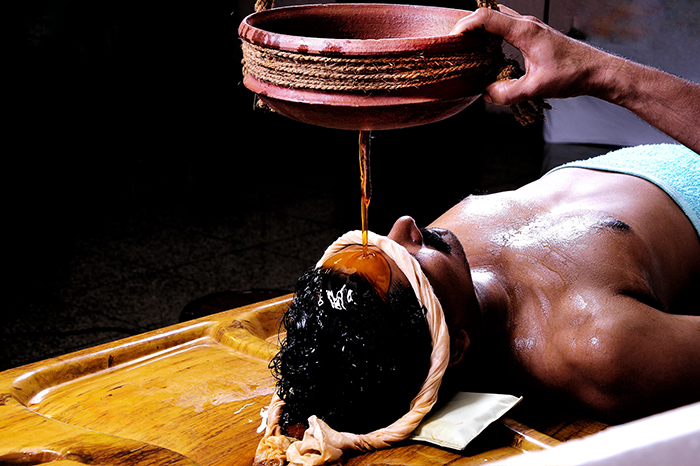
DHARA
The patient is advised to lie on a special wooden droni with his neck and head comfortably placed. Then a non-stop continuous stream of the prescribed liquid medicine is gently poured on his forehead from a prescribed height through a specially devised apparatus called Dhara Chatti for a period of one to one and a half hours. Dhara is occassionally administered on whole body in special cases.
Dhara is considered to be effective for several diseases like stress related disorders, sleeplessness and many degenerated brain disorders. Different liquid mediums are used in Dhara for different diseases. Medicated oils, milk, tender coconut water and decoctions of herb extracts are some of the fluids used.
-
Seasonal
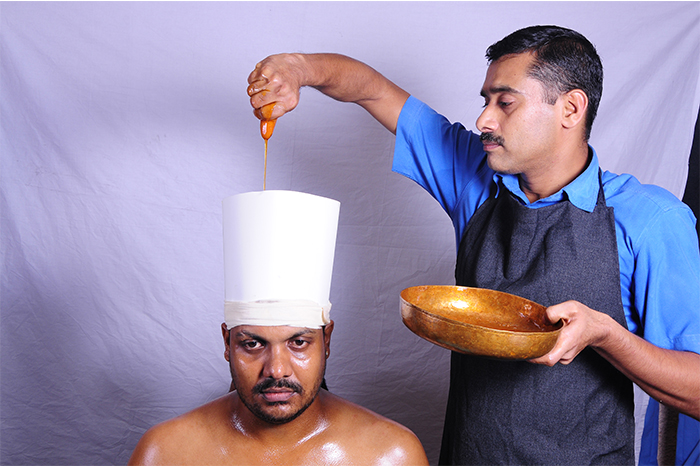
SIROVASTI
The treatment consists of keeping the prescribed medicated oil at a bearable temperature in a leather cap fitted around the head of the patient.The oil is filled in the cap up to a level of one finger above the crown of the head.The duration of treatment is between one and one and half hours.
Sirovasti is an important procedure which is found to be very effective in trigiminal neuralgia, hemicrania, optic atrophy, otalgia, deafness, facial paralysis and in all diseases affecting cranial nerves. Generally the course of treatment is only seven days at a stretch.
-
Seasonal
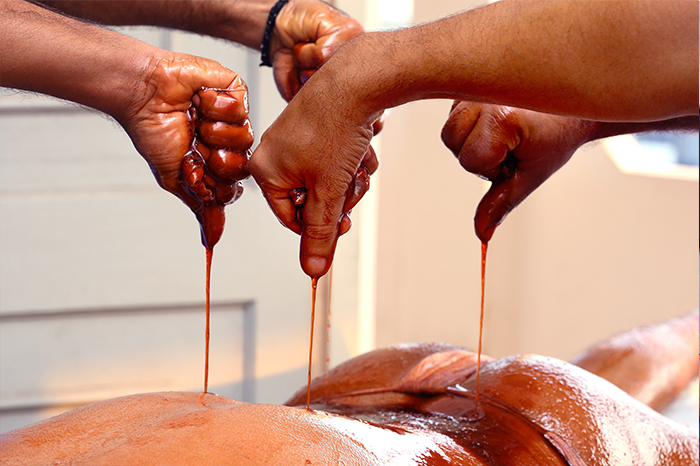
PIZHICHIL
The patient is made to lie on a wooden Droni (a specially designed wooden plank). Then pieces of linen dipped in comfortably warm medicated oil are squeezed over the patient’s body from a specific height. When the warm oil flows and spreads over the body, four masseurs sitting on either side give the patient a gentle massage . This is effective in diseases connected with the Vata Dosha and its allied manifestations like spondylosis, hemiplegia, Arhtritis, back pain, muscular dystrophy etc.. This is done only on the body below the neck and the duration can be fixed from one to one and a half hours depending upon the strength of the patient.
-
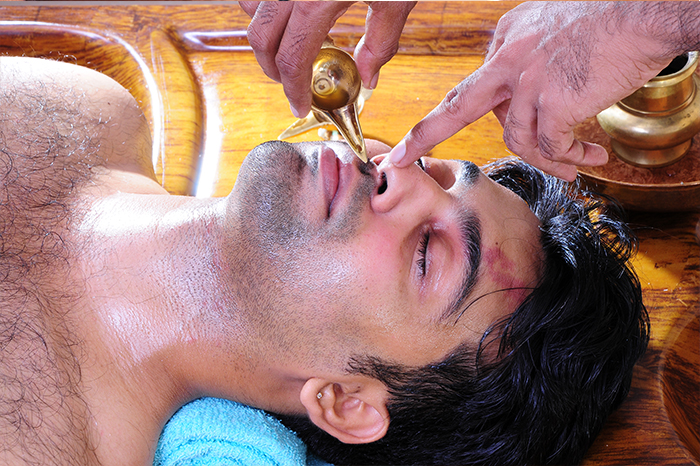 New
New
NASYAM
These treatments are specially effective in paralysis, rheumatism, arthritis, spondylosis, and other psychosomatic diseases. The classical therapies are also made use of, for devising new treatment modalities to deal with several serious ailments of the modern man such as parkinsonism, motor neuron diseases, cancer etc. The major treatments provided at the hospital are: Snehapanam Dhara
(Oordhwanga Dhara & Sarvanga Dhara), Pizhichil, Navarakkizhi, Sirovasti, Pichu and Sirolepa. Besides these specialised methods, the hospital offers Panchakarma treatments like Kashayavasthy, Snehavasthy, Nasyam, Virechanam and Raktamoksham.

